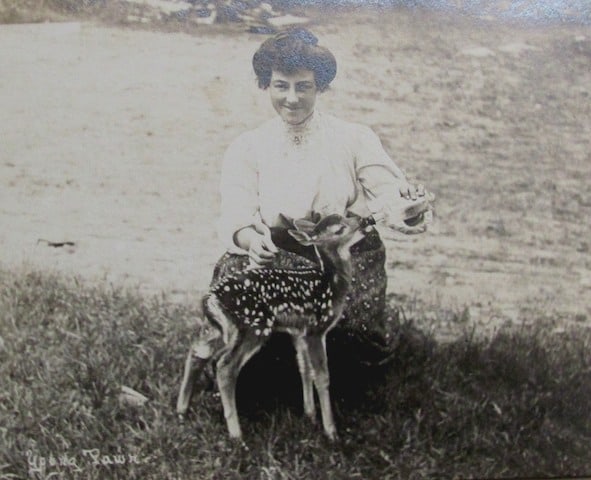
Below are a couple examples of wildlife behavior that I have witnessed over the years. You might enjoy learning these little tidbits.
Drunken deer
It was about three weeks ago when I saw four deer under an apple tree in my field. There were two mature doe and two yearlings.
A farmer told me years ago that cows get drunk eating green apples. This also applies to deer and other cloven hoof animals. Deer do eat green apples.
I watched as a doe, standing on all fours, reached up to get a green Macintosh apple. All were busy eating apples in a similar fashion. One doe stood up on her hind legs so she could reach apples higher up in the branches. “Neat,” I says to Henry.
After a few minutes, the four deer began running around the field frolicking. They were kicking up their hind legs like bucking broncos. They chased and head bumped each other in a playful manner. At one point, a yearling jumped right over one of the doe. They obviously had a buzz-on.
I did some research online and discovered apple acidosis. Below is an excerpt from an article written by Melissa Bravo for www.ProgressiveForage.com.

Apple acidosis
“Grazing cattle and horses, as well as moose, elk, deer, goats and sheep, are guilty of overindulging in the sugary bounties of Mother Nature. But while the occasionally drunken pig tottering around is hilarious, it is quite another thing to have an entire herd drunk from binging on apples.
A local writer and former neighbor of mine, Pat Davis, tells a story of the day ‘six highly inebriated cows, marching flank to flank like a row of members of a marching band, came charging down over a bank, bawling at the top of their lungs, stopping just short of a fence and together whirling around as one giant fan, charged back up over the hill.’”
If you don’t have any apple trees in your yard, plant one or two. Honeybees, birds that nest in the trees, and the deer will thank you. Sometimes in February, I have a flock of grosbeaks fly in to eat the frozen and shriveled up apples left on the trees. It’s hard to beat Mother Nature.
Partridge
Partridge, or ruffed grouse as some call them, have a couple interesting characteristics. In late May to early June if you happen to be hiking in the woods, you might encounter a mother partridge with her young. Mom has an interesting defense mechanism when threatened.
She will drop one wing and drag it on the ground. She will run away from you pretending to be injured. Predators will take after her thinking she’s an easy meal. When she has led the predator far enough from her chicks, she will take flight. She will return when safe and gather up her chicks.
Drumming
Another interesting thing is done by the male partridge. A male partridge will hop up onto a log. He has a way up cupping his wings forward. Beginning with a slow beat of his cupped wings, his pace quickens. The sound he creates is somewhat like a drum and thus why it is called drumming.
It begins slowly phoof, phoof, phoof, steadily increasing in rapidity, ending almost as fast as a machine gun. He’ll wait a few minutes and do it again. This sound can be heard for a half-mile or more. It is a common occurrence in our area. The male does this to attract a mate or to defend his territory. It is a warning to other males that this is his territory.
If you go online, you’ll find videos of partridge drumming. You should familiarize yourself with this sound so that you will recognize it should you hear it.
The photo with this article is Frank Clark’s pet deer being bottle-fed. Frank lived up in Popple Dungeon. It dates to 1913-1914.
Ted Spaulding told me a story that was told to him. It was in the 1950s when two male friends attended the dance at the Gassetts Grange. After a while, they left the grange and went to riding around. Of course, they continued drinking. At some point, the well-oiled passenger needed to water the horse so the driver pulled over. He stepped out to do his business. Unseen in the darkness was an electric fence. Shocking!
This week’s old saying is from Kim Kendall: “I’ll see you in the future. If not, in the pasture.” The pasture was the cemetery.